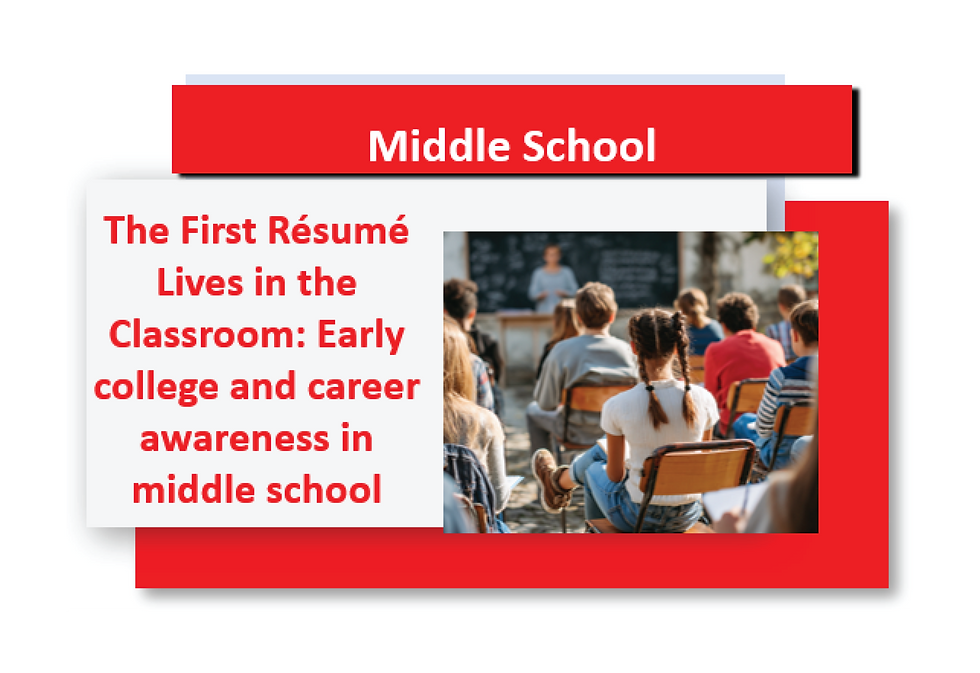Middle School Decision Making: Why these years shape judgment for life
- andrean48
- Sep 16
- 2 min read
Updated: Sep 22
What changes in the brain and social world during early adolescence, why choices feel harder, and what helps students develop sound judgment.
Early adolescence is a turning point for judgment. Brain systems that chase novelty and social reward speed up before the systems that brake and plan catch up. At the same time, the social world gets louder. Friend groups shift, expectations rise, and digital life adds more chances to act in the moment. Put those forces together, and choices feel faster, riskier, and more public.
What changes in these years
Motivation is primed for peers. Being accepted or excluded feels bigger than it did in elementary school.
Sensation seeking increases. New experiences and quick wins look more attractive.
Planning skills are still under construction. Students can reason well when they slow down, yet the default is to speed up.
This does not mean students are reckless by nature. It means context matters. Environments that slow the pace and surface consequences help adolescents show the judgment they already have in them.
Why choices feel hard at school
Middle school multiplies small decisions that carry real effects. Late work in two classes. A post that could be funny or unkind. Whether to ask for help before a test. Most choices trade short-term relief for long-term costs. Present bias makes the near win look larger than the later loss, especially when friends are watching.
The traps students name
“Everyone is doing it” when the visible few are the loudest.
All or nothing thinking that turns one mistake into “I am bad at this.”
Catastrophizing about social fallout that will likely fade.
Sunk cost, where a weak plan continues because time has already been spent.
Naming these patterns lowers their power. Once a student can spot a trap, they can reach for a different move.
What helps students choose well
Slow the moment. Short pauses let planning catch up to impulse. A simple question works: What happens next for me and for others?
Make values visible. When students can state what matters to them, it gets easier to reject options that do not fit. Safety. Trust. Learning. Those anchors simplify the map.
Forecast both timelines. Ask what changes right away and what changes in a week. The second timeline shrinks the pull of right now.
Invite revision. New facts allow a new choice. Adolescents grow when adults treat revision as strength, not weakness.
Practice with low stakes. Case stories, decision trees, and short write-ups give reps without embarrassment. Repetition builds fluency.
Why this links to behavior
Better decisions show up as fewer “heat of the moment” incidents, stronger recovery after mistakes, and more on-time work. When students believe they can re-choose, they return to tasks more quickly and repair harm more quickly. Judgment is not a single lesson. It is a habit formed through many small interactions.




Comments